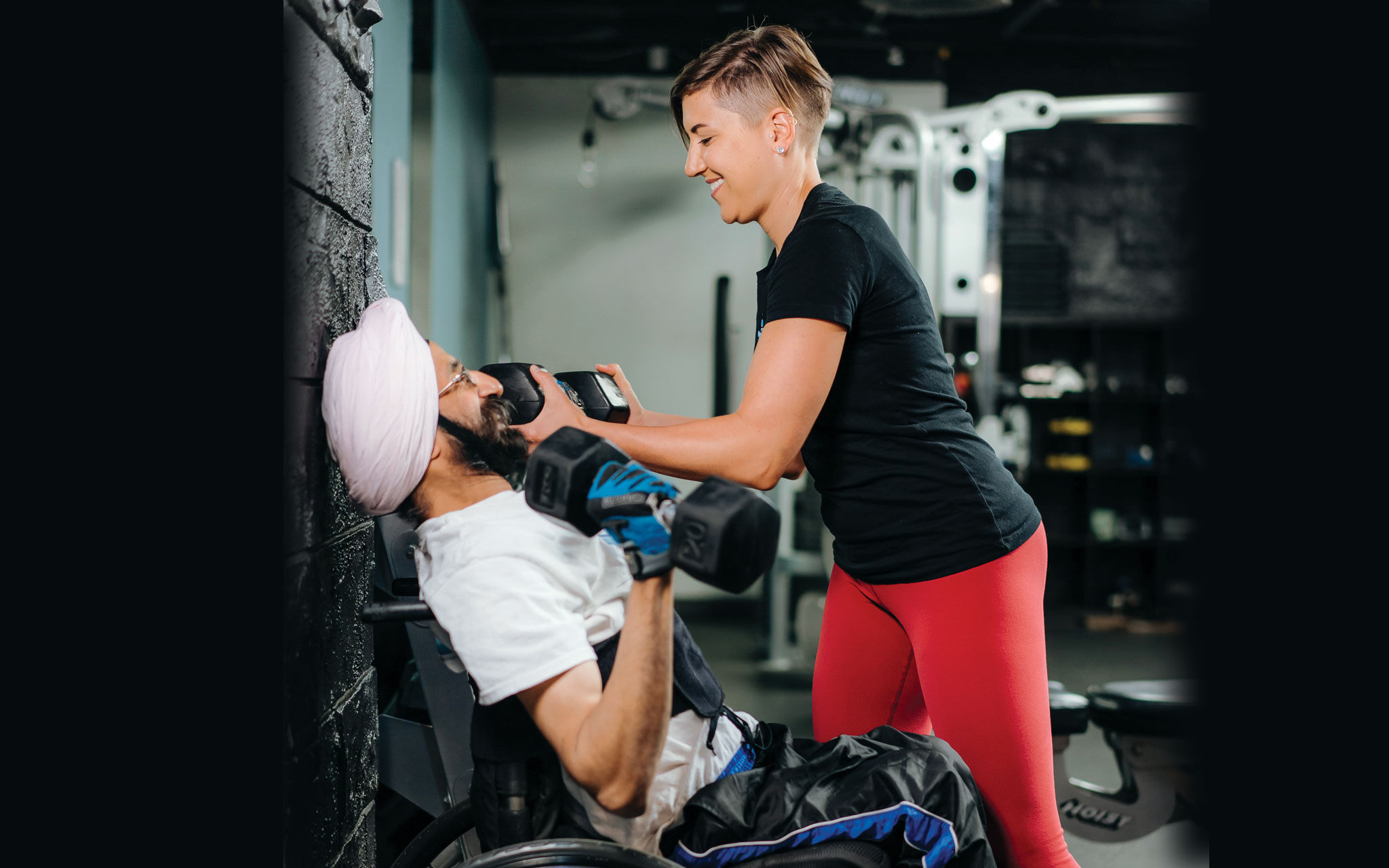By Megan Williamson BA, National Academy of Sports Medicine Certified Personal Trainer
Can you believe that it’s already that time? I work with many clients over long periods of time, and because of this I end up hearing basically the same request every year in November, and it goes something along the lines of:
“Megan I’m really wanting to dial in my focus on my weight before the holidays.”
One specific term comes to mind that I hear quite often: Quad belly. What exactly is ‘quad belly’? Here are some generalized facts on quad belly:
• Appears from the lack of tone usually from paralyzed or weak abdominal wall muscles
• Is noticed most typically when the person is seated (like in the wheelchair; this is essentially from the weight of the organs being pushed outwards)
• Is usually not caused by being overweight (even people with the smallest of frames can have a quad belly)
Although having paralysis is a cause for this ab wall and organ distension, it is not the only possible cause. Other physically disabled persons can also experience the same thing from having weak or under-active abdominal muscles. In other words, you don’t necessarily need to have a complete SCI to experience the so-called quad belly. This leads to the pressing question at hand…Can I make my quad belly smaller? Here are a few steps that you can take to help reduce quad belly:
Breathing technique.Practicing your breathing and focusing on utilizing our deep belly muscles (diaphragm) instead of just using our lungs (chest breathing). How to start: Lay down on your back and have your left hand on your chest, right hand on your abdominals. Take in a deep breath and only let your right-hand rise (hand on belly). As you exhale, feel it sink down into the floor. Try 10 to 15 breaths first thing in the morning.
Core work.Try incorporating core work into your routine. The more we can strengthen the abdominal walls the more tone they will have to help support the internal organs. Remember, it may feel like you aren’t doing much at first but stay consistent and over time you may be surprised at how the body adapts.
Follow a balanced diet low in saturated and trans fats. Consider keeping a food journal and tracking the amounts of animal fats, processed foods and dairy that you are eating. Consider adopting more vegetables, lean proteins and healthy fats to help keep organs functioning properly.
Watch your alcohol intake. Drinking high levels of alcohol encourages visceral fat storage in our bodies. Consider sticking to the dietary recommended limits for alcohol per week, or better yet saving it for special occasions, like at the holiday party or New Years Eve.
Although abdominal binders are an option for some people to help stop any further stretching of the abdominal walls and work well for some people. I highly suggest talking to your doctor if you want to learn more about ab binders and if they are right for you.
And last but not least….
Chair posture. One instant fix that I’ve seen with clients is changing their chair posture. This can be done with your OT. Sometimes seated for ‘comfort’ can create a slumped or slouched type look, thus causing more distension of the belly because we aren’t having to utilize any of the torso muscles. If we are sitting more upright, this will automatically create a flatter tummy because our spine is closer to a neutral position.
Here’s the good news: You can have a glass of red wine this holiday season, maybe even a cookie or two; and still make progress on decreasing abdominal distension.
But like anything, there will be change made with consistency over time. Don’t worry, a couple of holiday parties are not going to derail you from progress. What will make the most impact is staying active through the holidays and focusing on the above tips throughout the entire year. Happy holidays!
Your Coach,
Megan














